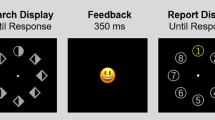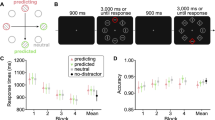Summary
The present study was designed to determine the effect of perceptual organization on the susceptibility of learned material to retroactive inhibition. Studies of isolation effect reported by von Restorff (1933) and Siegel (1943) suggest that an isolated item, standing out as figure on a ground, resists interference and is retained better as compared to the massed or similar items which suffer the fate of assimilation and lose their identity. This is taken as a proof of Gestalt hypothesis which predicts that perceptual organizing forces set up at the time of original learning persist during the retention interval and enhance retention. If we accept the behaviourist's contention that isolation aids discrimination, the results of the studies of isolation effect can also be explained in terms of reduced intraserial interference. Thus there is an uncertainty with regard to the effect of perceptual organization on the susceptibility of learned material to retroactive inhibition. This is, perhaps, due to the fact that the design of the studies of isolation effect could not permit sufficient control over the factor of similarity.
In the present research an attempt has been made to overcome the defects of the previous studies by introducing the factor of perceptual organization in the original learning material without simultaneously reducing the inter-list similarity in a typical RI condition.
The material employed in the present study were vague drawings representing various classes of objects. These visual forms could be made highly similar in form but different in meaning. There were four conditions of experiment, two without interpolated activity and two with interpolated activity. In one of the two RI conditions, the stimulus items constituting the original list were grouped and presented in a contextually arranged serial order. No such contextual arrangement was made in the second RI condition. In both the conditions the corresponding items of the original and interpolated lists were kept similar. This was done to keep the factor of similarity constant in the two RI conditions. Subjects of this experiment were 56 German students of degree classes. They were assigned to four groups according to the specific conditions of the experiment. Thus there were 14 subjects in each group.
The data obtained were statistically analyzed to yield necessary inferences. The median test was used to test the significance of difference between any two comparison groups. The main finding of the present study is that the perceptually organized materials are less susceptible to retroactive inhibition than unorganized material.
Similar content being viewed by others
References
Gibson, E. J.: Retroactive inhibition as a function of degree of generalisation between tasks. J. exp. Psychol. 28, 93–115 (1941).
Gutjahr, W.: Über Einprägungsdynamik. Z. Psychol. 162, 223–237 (1958).
—: Über Aktualisierungsdynamik. Z. Psychol. 163, 1–108 (1959).
Osgood, C. E.: Method and theory in experimental psychology, 2nd ed. New York: Oxford Univ. Press 1956.
Restorff, H. v.: Über die Wirkung von Bereichsbildungen im Spurenfeld. In: W. Kohler u. H. von Restorff, Analyse von Vorgängen im Spurenfeld. Psychol. Forsch. 18, 299–342 (1933).
Saul, E. V., Osgood, C. E.: Perceptual organisation of materials as a factor influencing ease of learning and degree of retention. J. exp. Psychol. 40, 372–379 (1950).
Siegel, P. S.: Structure effects within a memory series. J. exp. Psychol. 33, 311–316 (1943).
Author information
Authors and Affiliations
Additional information
I am thankful to Prof. F. Sander (Bonn) and Prof. Graumann (Heidelberg) for their valuable help and guidance in the design and conduct of this study. I am also indebted to Professor Anwar Ansari of Aligarh Muslim University who read the manuscript and gave valuable suggestions.
Rights and permissions
About this article
Cite this article
Qadri, A.J. Effect of perceptual organization on the susceptibility of learned material to retroactive inhibition. Psychol. Forsch. 33, 197–207 (1970). https://doi.org/10.1007/BF00424663
Received:
Issue Date:
DOI: https://doi.org/10.1007/BF00424663




